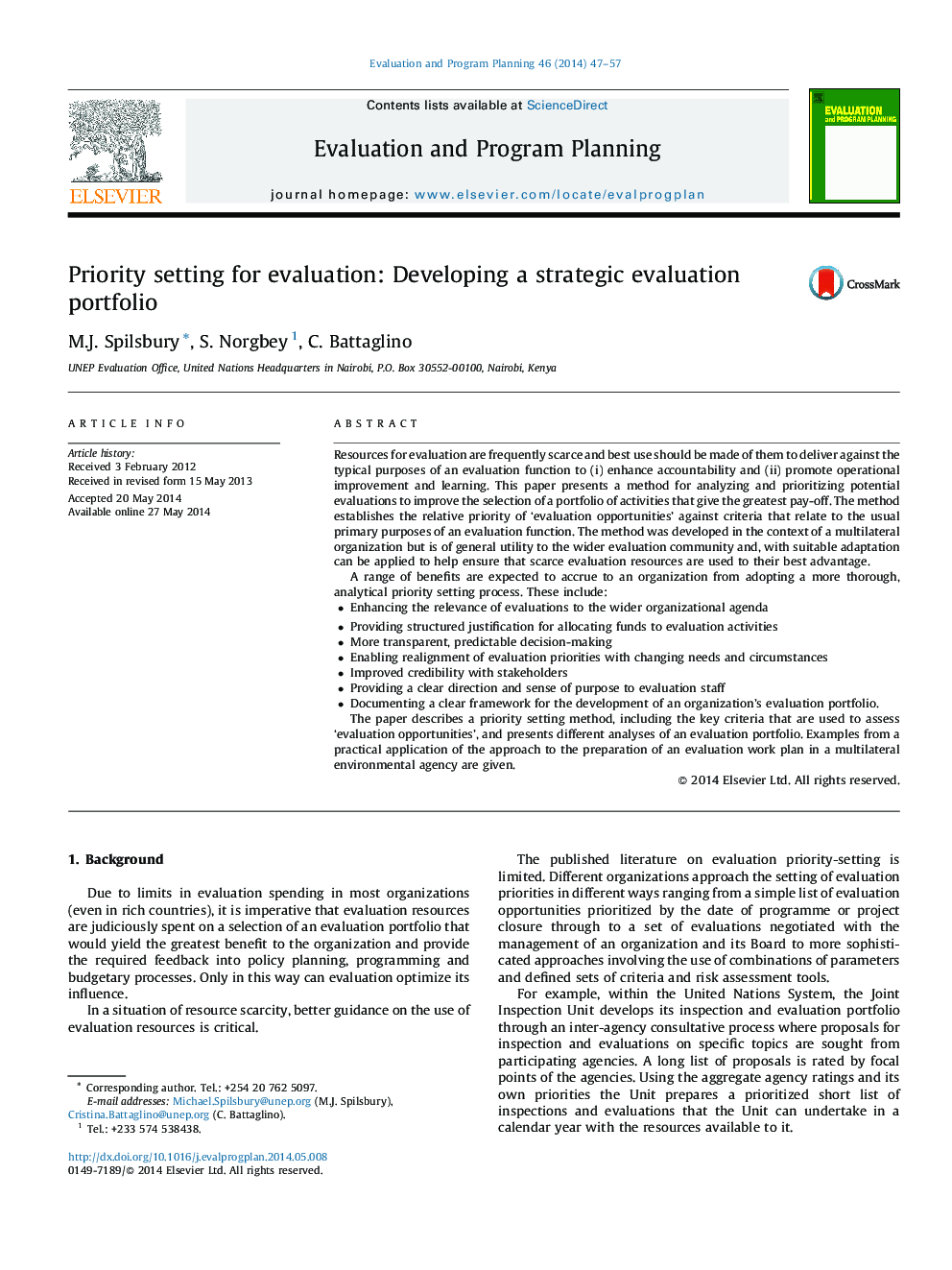| کد مقاله | کد نشریه | سال انتشار | مقاله انگلیسی | نسخه تمام متن |
|---|---|---|---|---|
| 321332 | 539782 | 2014 | 11 صفحه PDF | دانلود رایگان |
• Describes a priority setting method including key criteria used to assess ‘evaluation opportunities’ in terms of relative ‘feasibility’ and ‘attractiveness’.
• Identifies trade-offs between evaluations that differentially contribute to ‘improved accountability’, ‘operational improvement/learning’, strategic importance, use for resource mobilization.
• Greatest pay-offs come from evaluations focusing on assessment of outcomes and impacts of ongoing programmes aligned with organizational strategic priorities.
Resources for evaluation are frequently scarce and best use should be made of them to deliver against the typical purposes of an evaluation function to (i) enhance accountability and (ii) promote operational improvement and learning. This paper presents a method for analyzing and prioritizing potential evaluations to improve the selection of a portfolio of activities that give the greatest pay-off. The method establishes the relative priority of ‘evaluation opportunities’ against criteria that relate to the usual primary purposes of an evaluation function. The method was developed in the context of a multilateral organization but is of general utility to the wider evaluation community and, with suitable adaptation can be applied to help ensure that scarce evaluation resources are used to their best advantage.A range of benefits are expected to accrue to an organization from adopting a more thorough, analytical priority setting process. These include:
• Enhancing the relevance of evaluations to the wider organizational agenda
• Providing structured justification for allocating funds to evaluation activities
• More transparent, predictable decision-making
• Enabling realignment of evaluation priorities with changing needs and circumstances
• Improved credibility with stakeholders
• Providing a clear direction and sense of purpose to evaluation staff
• Documenting a clear framework for the development of an organization's evaluation portfolio.The paper describes a priority setting method, including the key criteria that are used to assess ‘evaluation opportunities’, and presents different analyses of an evaluation portfolio. Examples from a practical application of the approach to the preparation of an evaluation work plan in a multilateral environmental agency are given.
Journal: Evaluation and Program Planning - Volume 46, October 2014, Pages 47–57
